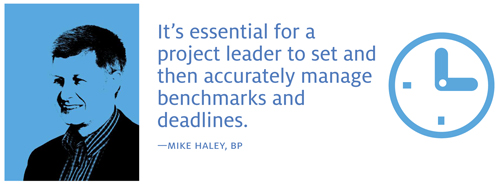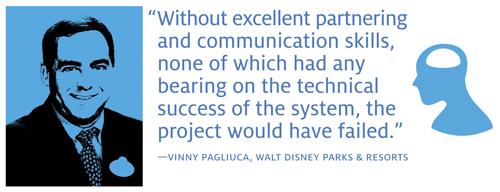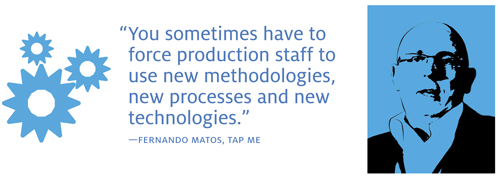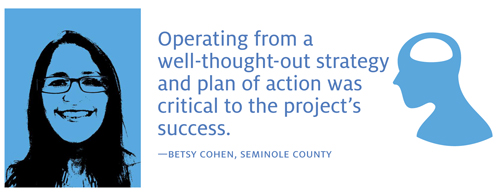Aug 26, 2014The word "mandate" looms large in the hearts and minds of many manufacturing, defense and apparel retail suppliers that have been asked to RFID-tag pallets, cases or items for their customers. Whether it's called a mandate or a request, most suppliers view RFID-tagging shipments as a cost of doing business. Consequently, they opt for the easiest and least expensive slap-and-ship approach.
In this regard, little has changed since 2003, when Walmart first asked its suppliers to RFID-tag cases and pallets. The retailer's request (Walmart didn't use the term "mandate") led to the notion that the technology was largely a tool that would benefit the customer. That notion was reinforced in 2004, when the U.S. Department of Defense (DOD) announced its RFID-tagging initiative. Stories surfaced of firms placing tags on pallets and cases without adhering to any quality-control standards. Whether the tags worked correctly was secondary to meeting Walmart's or the DOD's mandate.

Slap and ship remains the order of the day for far too many contractors, says Don Ertel, senior VP of operations at CDO Technologies, a systems-integration firm that manages major RFID initiatives for government and industry, including the DOD. "Executives at suppliers continue to think in limited terms, because they've grown accustomed to a sale as a simple and straightforward transaction rather than something that's part of a larger business ecosystem."
Apparel retailers are now experiencing similar reactions from their suppliers. Most retailers have been RFID-tagging apparel items from different manufacturers, either at their distribution centers or when the goods arrive at the stores. But the process is inefficient, and they would like to see their suppliers do the tagging. The suppliers see RFID as an additional cost and believe all the benefits go to the retailer.
"There's been a perception that the reason to use RFID is because a big gorilla customer has demanded it," says Ian Robertson, CEO of Supply Chain RFID Consulting. "Unfortunately, this thinking diverts attention away from the opportunities and possibilities that RFID provides." In fact, Robertson, who introduced the term "slap and ship," bristles at the mention of the concept, which he says has been misconstrued. "I always thought suppliers should do more than slap and ship," he says. "The goal should be to use RFID to drive internal gains as well as better performance across a supply chain."
To that end, a lot has changed since Walmart first asked suppliers to use RFID. Many
legitimate supplier complaints—tag costs are too high, read rates are too low, there's no
business case—have been addressed. The price of tags, readers and middleware has fallen,
and the technology is more reliable and easier to deploy. In addition, early adopters and industry groups have developed solid business cases for suppliers.
Yet, while there's a growing acknowledgement that RFID fuels gains, there's a general lack of understanding about how to use it in a more dynamic way, Ertel says. "We see a lot of niche and specialty uses, but not many organizations and supply chains taking a more comprehensive view of how to move from incremental gains to more substantial benefits."
Many suppliers have settled into a business-as-usual approach, Robertson says, but they can benefit immensely by taking another look at the business case for RFID. "Advances in the technology have opened the door to possibilities that didn't exist only a few years ago," he says. "A lot of opportunities are flying below the radar because both suppliers and upstream supply-chain partners are busy with so many initiatives, and they haven't examined or reexamined RFID over the last few years."
Internal Benefits
Suppliers that ask, "What's in it for me?" should consider that they have many of the same problems as their customers. They, too, could benefit from using RFID to track and manage inventory, tools, work-in-process and finished goods in their factories and warehouses, as well as to authenticate their products.

Killdeer Mountain Manufacturing, for example, a small family-owned company in North Dakota that makes aerospace components, deployed an RFID work-in-process application to track orders for Boeing. Killdeer improved customer relations and transformed its own operations, shaving costs and streamlining processes. Warmkraft, a Mississippi company that applies finishes to military uniforms, has reduced its manual shipping labor costs and lowered its shipping-error rate by RFID-tagging its products at the item level after those goods are treated, and by then reading the tags prior to shipment.
In the retail arena, a report from the University of Arkansas' Information Technology Research Institute has identified 60 unique business cases for apparel suppliers. They fall into three categories: quality management, inventory management, and inbound and outbound. The applications revolve mainly around receiving accuracy, pick and pack accuracy, shipping accuracy and electronic proof of delivery (EPOD), says Bill Hardgrave, dean of Auburn University's Harbert College of Business and founder of the RFID Research Center.
"Too many suppliers are attempting to respond to retailers requesting them to tag rather than looking at the underlying business case for RFID," Hardgrave says. "The thinking needs to shift from viewing RFID as a necessary cost of business to recognizing it as a genuine opportunity to drive business gains. There are enormous possibilities for suppliers that understand the business case for using the technology within their own facilities, including tagging items as close to the point of manufacture as possible."
Suppliers that adopt RFID to improve processes and workflows in a way that isn't possible with older and less automated systems are also likely to achieve other gains, says Diana Hage, CEO of consulting and integration firm RFID Global Solution. "It's not just about having information to drive better decision-making among managers and executives," she says. "There are CAPEX [capital expenditure] spending reductions."
Supply Chain Benefits
Today's business relationships and supply chains are deeply interwoven. Suppliers need to source and acquire raw materials and components from different companies that become part of the product that's shipped off to a customer.
Suppliers that can track materials and goods from their suppliers can develop a real-time inventory model. This makes it possible to trim costs and inefficiencies related to carrying too much or too little inventory. It also means not having to stop production lines because of a shortage of raw materials, as well as being able to fulfill customer orders on time.
Then, instead of just slapping and shipping goods to customers, suppliers could use the RFID tags to ensure orders are filled correctly, and automate the process of reconciling what was received against what was shipped with EPOD. Often, suppliers are fined because customers claim their orders were not delivered correctly, Robertson says, even though studies show most errors occur on the receiving dock (see An Impartial Observer). In addition, once goods are tagged, they can be used to support auto-replenishment.

CDO Technologies' Ertel says organizations must understand where a value proposition lies. Tagging specific ingredients, materials and components at the item level, for example, can benefit all stakeholders—retailers, manufacturers and suppliers—by establishing traceability back to the point of origin. This makes it possible to trace and track food items, cosmetics, automotive and aerospace components and scores of other items. "If a recall takes place," he says, "it makes it a lot easier to locate the product, pull it from shelves and recover it in a timely manner."
Tackling Challenges
Suppliers, like other adopters of RFID technology, will have to identify the business problems they want to solve, and then bone up on RFID to learn which system is best for their needs. Establishing a crossfunctional team is vital to identifying opportunities and interconnecting processes and systems for maximum performance and return on investment, Hage says. "It's all about figuring out how to best leverage the wealth of information in ways that make a business operate better and delight customers," she says.
Fortunately, there's a lot of information available to help suppliers deploy a system successfully and manage the inevitable change to employees' jobs and workflows (see How to Choose the Right RFID System: A Step-by-Step Guide and Best RFID Deployment Practices). GS1 US offers the EPC Item-Level Readiness Program, which provides education, training, tools and community support to help apparel suppliers implement Electronic Product Code item-level tagging for day-to-day operations.
It's important for suppliers to take advantage of the knowledge acquired by early adopters
before unleashing a project on the company. In some cases, IT departments lack knowledge and experience with RFID but perceive that switching on a system is a fairly straightforward proposition, Ertel notes. Consequently, he says, "They take on projects that fail and it gives RFID a bad name. It reinforces the notion that it's nothing more than a slap-and-ship tool—and that RFID is nothing more than a way to meet the letter of the law rather than a business opportunity."
One of the biggest challenges for some suppliers considering RFID for supply-chain management is that they lack a unique identity for products they produce, Robertson says. Assigning a unique serial number to each item they want to track—a process called serialization—requires a well-thought-out plan. But here, too, there are guidelines and best practices (see Identifying Items and Serialization Road Map).
In addition, suppliers, including those in industries that have already serialized items, must collaborate with supply-chain partners to design a system that works across multiple companies and environments. The discussion should focus on how to take a distributed approach from manufacture to point of consumption, Robertson says. "Start with your supplier to see if you can agree on which goods should be tagged and how the collective costs are borne on a fair and equitable basis," he advises. "If you can solve the problem with your supplier, it's a lot easier to then work with the next player in the chain—your customer."
Suppliers Need Help
Many suppliers—particularly smaller firms—do not possess the expertise, resources or budget to identify RFID opportunities and put them into play. Moreover, these businesses regularly face challenges in designing and building systems compatible with multiple upstream partners. In addition, trust issues sometimes arise, particularly when proprietary data is shared across organizations.

A significant problem, Hardgrave says, is that many of today's RFID initiatives are not scalable. A particular company embarks on a project to address a specific need, but the system doesn't necessarily mesh with other systems and firms. At the outset, he says, there's a need to build in governance, standards and policies—but expand the planning beyond the IT departments, which often have a limited scope.
The upshot? "Larger firms must educate suppliers about the benefits of RFID and also consider paying for projects or at least incentivizing them," says Richard Aufreiter, director of product management for identification technologies at HID Global. To work with suppliers effectively, it's important to identify the key business and technology decision makers and enlighten them about the benefits and ROI associated with RFID, Aufreiter says.
Past success stories or case studies and cost-benefit models that demonstrate the financial gains are particularly effective. It may also be necessary to walk business leaders through a nontechnical presentation about what an initiative has to offer and what benefits will accrue. "There remains a huge gap between the RFID technology industry and the non-RFID world," he says.
Often, getting a project off the ground requires the provision of funding for outside consultants and integrators to ensure that systems and data connect across organizational boundaries as well as different IT environments, Aufreiter says. It may mean developing middleware and coding new application programming interfaces (APIs). There's almost certainly a need to examine workflows and reengineer processes with the right external touch points. In some cases, different manufacturers or distributors may want to focus on different problems or opportunities, he adds.
It's also important to provide training and development sessions that focus on how to use an RFID system successfully on a day-to-day basis—as well as how to harness it within a broader strategic framework. The initial project may serve as a starting point for the supplier to launch additional projects that produce bigger gains. The end goal, CDO Technologies' Ertel says, is to establish a technology platform that supports communication, collaboration and data exchange. "While many suppliers benefit from these systems, they either can't see or can't establish the business case on their own," he says. "Some suppliers can't afford to pay for consultants, integrators and others."
Suppliers that want to push forward with an initiative should "focus on finding an anchor partner or tenant that adds value and expand from there," Hage says. "Define the goals, identify the systems, understand the interchange of data and delineate the reporting structure." She also believes it's critical to establish a Single Source of Truth (SSoT) database for asset records.
Mutual Benefits
Achieving RFID's full potential means large organizations and their supply-chain partners must approach the technology with the idea of building systems that benefit everyone involved. Jet maker Airbus, for example, developed a three-phase program to improve business processes and provide real-time automated visibility across its entire value chain of operations, from suppliers to customers, says Carlo Nizam, head of value chain visibility and auto ID. "We want to encourage all the players to join in the party," Nizam says. "It is in everyone's interests to reduce costs."

When Valtra, a Finnish manufacturer of custom tractors, wanted to ensure its factory was always stocked to fulfill orders, it worked with one of its suppliers, Metal Power, to deploy an RFID system that tracks parts from the suppliers' facilities to Valtra's warehouse. The solution automates and streamlines parts replenishment and parts inventory management processes for Valtra, and also benefits Metal Power by providing visibility into inventory levels and parts consumption at the factory.
The work-in-process solution that Killdeer Mountain Manufacturing deployed was funded by the U.S. Air Force and developed by KMM, Boeing, the Air Force Manufacturing Technology Division and several RFID solution providers. Providing up-to-the-minute information regarding the status of its products helps Boeing, one of KMM's main customers, better plan its production schedules.
RFID adoption will steadily grow as suppliers recognize what RFID has to offer and how the technology can improve both internal processes and supply chains, says John Devlin, practice director at ABI Research. For now, Devlin suggests larger supply-chain partners aid in identifying benefits—particularly in the asset-management space—and build on slow but steady advances. "RFID will ultimately be widely used because it adds intelligence to systems," he says.
Supplier adoption will result more from the "pull" of large firms rather than a push by suppliers, Hardgrave says. "The hope is that once suppliers begin tagging products they will see the benefits beyond what they now receive by operating under the mandate of a retailer or manufacturer." At that point, he says, adoption will likely take off and far more substantial gains will result. "Businesses that deploy RFID more comprehensively gain a more strategic view of assets, products and the supply chain," Hage says. "Suppliers are only beginning to wake up to this fact."
